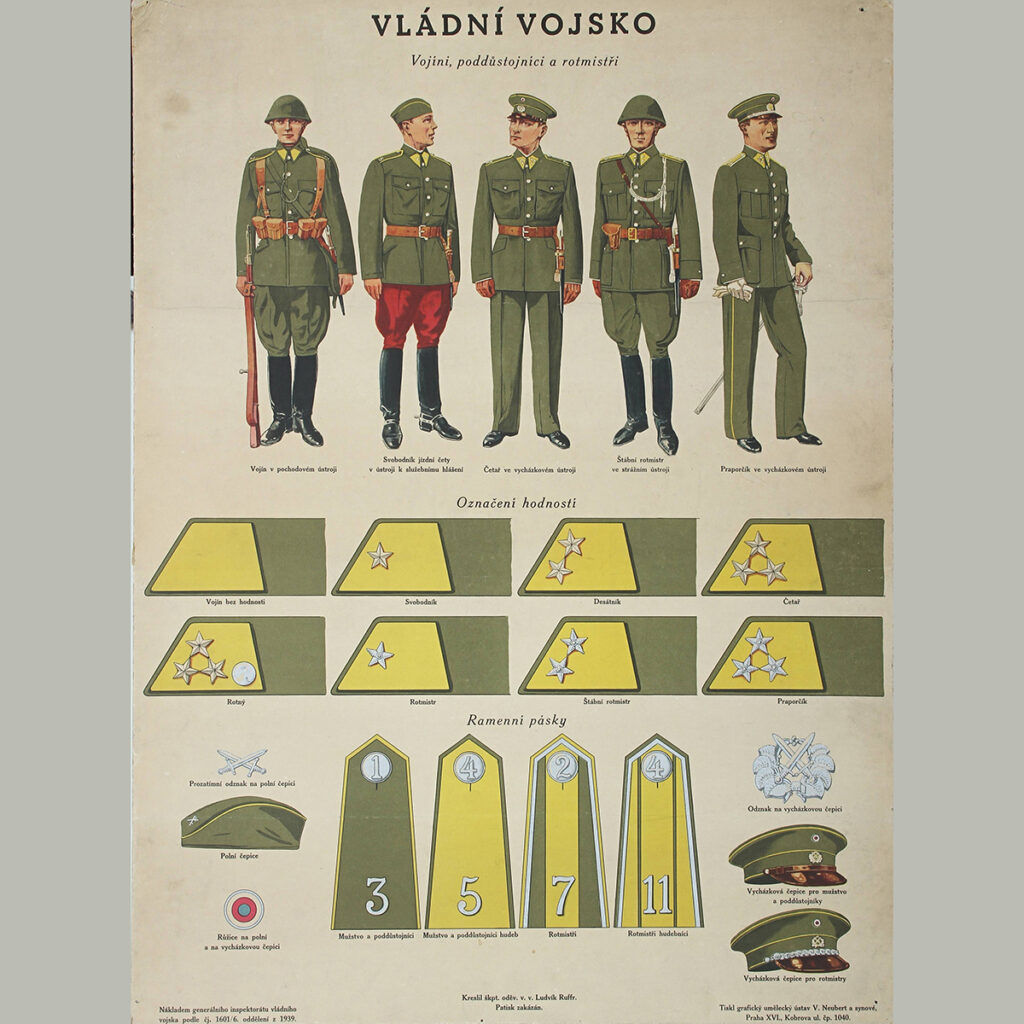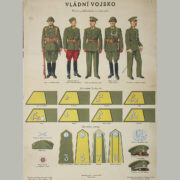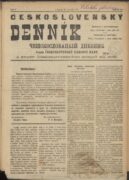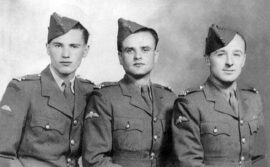
02 Overview of Government Army Uniforms, 1939
Fotogalerie

The uniforms of the Government Army underwent a complex evolution beginning in the summer of 1939. The result of “struggles” between uniform committees with the German occupation authorities was a uniform that retained Czech elements without any Nazi symbolism. The jacket of the uniform, produced from 1940, was based on the uniform of the Czechoslovak Army. It had seven buttons, four pockets sewn on top and a folded collar. It also contained elements inspired by the Austro-Hungarian Army – rank insignia on the collar (here the rank of a staff sergeant) and the German Army – rank insignia above the right breast pocket and the shape of the buttons.
On 10 January 1940, the General Inspectorate of the Government Army introduced rank badges, following the example of the German armed forces. The badges had to be made according to the attached annex and had to correspond to the design of the minor emblem of the Protectorate of Bohemia and Moravia, as specified in Government Decree No. 222/1939 Coll. A badge of light grey mercerised yarn, woven on an olive green background, was prescribed for the ranks. It is rather interesting that the design of the badge itself was inspired by the buckle of the off-duty belt for technical sergeants and officers of the pre-war Czechoslovak Army. The Inspector General of the Government Army, General Eminger, traced deficiencies in the wearing of the insignia in Confidential Order No. 59 of 18 October 1940 on Uniform Defects. In particular, he took a special note of the bullion badges on off-duty jackets: “Various badges are far from resembling the prescribed designs, as they are imperfectly embroidered by hand with a metallic thread that is too thick, so that the detail of the drawing is completely lost.” He further pointed out that far less than all members of the Government Army wore the badge of rank even though it had been introduced more than six months before. From 1 November 1940, no member of the Government Army was allowed to appear in public without the prescribed insignia.
Aktuálně

Československý deník sehrál v životě legionářů v Rusku velmi důležitou roli. Poprvé vyšel v prosinci 1917

Děkujeme za podporu pro válečné veterány. Sbírka DiGiMÁK vynesla 450 tisíc korun

Tak trochu zamrzlé spojení

Válečný veterán Petr Matouš pokřtil v Armádním muzeu Žižkov svou knihu. Patronkou je i ministryně obrany Jana Černochová








